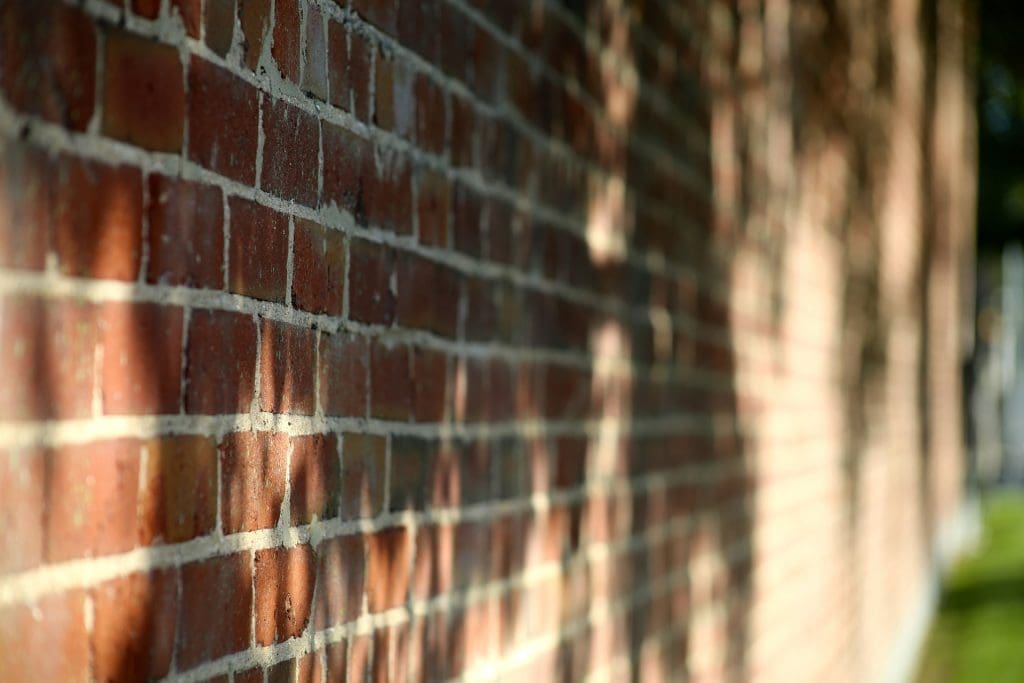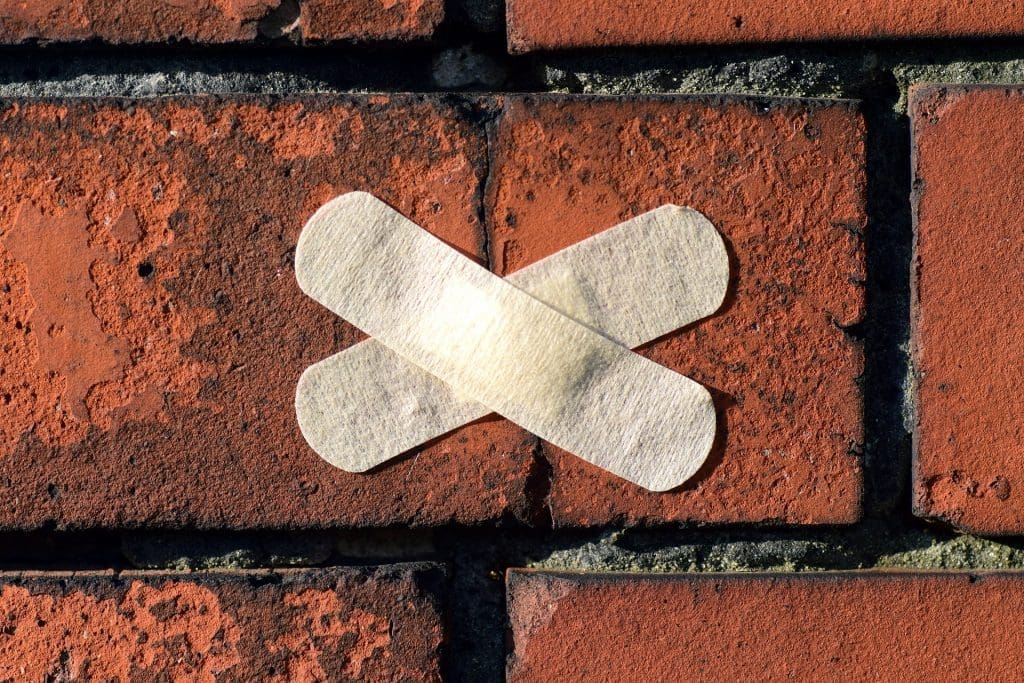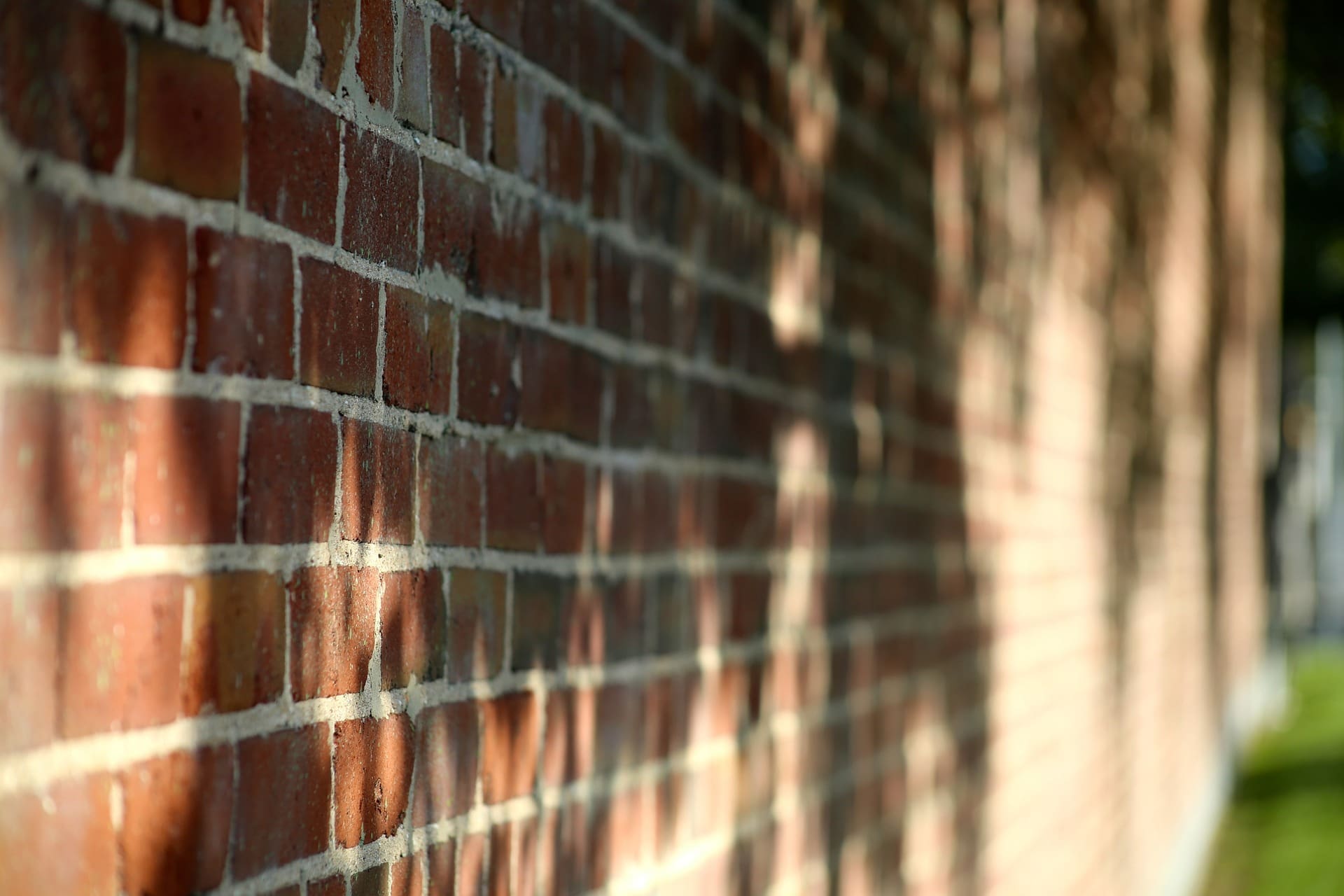Exterior walls of a house perform two key functions: to hold up the building and protect against the perpetual onslaught of the elements. Thus if a home inspection flags issues such as cracking or seaping water, this is a sign of failure that needs repairs before it escalates.
Brick and stone walls are considered the best quality for home exteriors. They are almost maintenance free and will last as long as the house, albeit with some repairs from time to time.

Identify Your Wall Type
The first step when inspecting your home is to identify the type of structure because defects and solutions vary depending on the wall type. In the early days of building construction, stone or brick materials were the ideal choice for exterior walls. But in modern construction, brick or stone facades attach to the exterior of wood frames for decorative and weather protection purposes rather than structural support.
When installing walls, many people assume brick is waterproof. But water can penetrate and seep through hence the need for placing a waterproof barrier on the wall before installing the brick siding. Installing bricks with a drainage plane or weep holes to give water an escape route is the way to go. Though costly this type of installation will help you avoid structural problems later.
Fixing Damaged Brickwork
Thanks to its durability, brickwork requires minimal maintenance. But often many homeowners neglect it resulting in defective brickwork hence a damp and a shabby-looking exterior. With a small investment of time and effort, you can tackle defects such as minor cracks, loose and crumbling bricks, bad pointing, and plant growth.
Settling
Settleming occurs when the material surrounding the foundation of a building breaks up and shifts causing support for the weight above to disappear. The unsupported parts drop resulting to cracks in the brickwork and internal structure which vary in size according to the problem.
Causes of settlement include:
- Mine workings below the building can lead to underground subsidence.
- Building a house on rubbish tips which are yet to settle and decay properly.
- Tree roots close to the house can adversely distort the foundations.
- Shifting of wet or dry soil.
A contractor can restore the building to its original height by raising it up and using piers or mudjacking to secure it. But to address the problem in totality, you will first need to analyze the soil or moisture content before you’re able to secure your home. Such evaluations add to the overall cost of repairs.


To avoid plants weakening the brickwork, the solution is to train climbing plants up a fixed trelliswork.
Most cracks around windows and doors are traceable to significant subsidence which results to distortion of the actual window or door frame. This is a common occurrence in new homes where the new wood shrinks as it dries, changing the shape of the frame in the process. The solution is to fill the cracks with flexible outdoor mastic. You can ignore small cracks though it’s better to patch them using grout tinted to match the brick.
The Nature of Bricks
Some clay bricks used in construction are soft and porous and may crack because of freezing cycles. For example, in wet autumn, unfinished bricks tend to become saturated, and when the temperature falls, water freezes and expands, cracking the bricks.
Symptoms of frost damage are pork marks and flaking of the surface of the brick face. If the damage is not extensive, paint the bricks with several coats of clear silicone fluid which repels the moisture, binds the substance to the brick, and reduces damage. But if the bricks have big cracks, you will have to replace them entirely.
Identify Eroded or Damaged Brick
Signs of aging also known as ‘period charm’ is sometimes a good thing, though many a time it’s an indicator of trouble. Minor erosion to old brick is common but excessive erosion may need repair or replacing. Signs of erosion include crumbling and spalling to the face of the brick and damp penetrating the wall sometimes leaving white salts on the surface.
Unless erosion is causing problems, let it be. The main problem arises when the harder, protective face of the brick is blown away, exposing the softer inner body to further deterioration. Extreme erosion results in damp penetration or the structural instability of the wall.
Causes of eroded and damaged bricks include:
- Water trapped in porous walls freezing and expanding, causing the surface to decay.
- Chemical salts from groundwater or the building itself crystalize and expand. As moisture evaporates from the wall, it damages the face.
- Damp penetrating from inside can also cause spalling. This occurs where the chimney breasts adjoin external walls, and flue gases eat away the bricks of the flue wall. You can prevent this type of erosion by lining the flue.
To repair eroded brick, you must first repair contributing causes of damage such as leaking pipes or gutters. Extensive damage to the main elevations will need entire facades to be clad or rendered.
Identify Damp Walls
Dampness in various forms is common and possible causes are many. Some of the symptoms of damp walls include damp smells, peeling wallpaper, white salt stains or black molds on walls. Dampness affects the floor structures or timber frame inner leaves which are at risk from fungal decay or an infestation of wood-boring beetles.
Causes include exposure of the wall to elements such as driving wind and rain which penetrates solid walls through eroded mortar joints.
To remedy damp walls, first address any rogue sources of water, such as leaks from gutters or pipework. Where there’s an erosion of mortar joints, raking out and repointing is required. Repointing solid walls with modern cement mortar can prevent damp from evaporating, trapping it in the wall. The remedy is to replace hard cement with flexible and breathable soft traditional lime-based mortars or renders.
Get Your Project Started
Living in a home with exposed brick is an experience many homeowners can relate. Some home repairs are as simple as rolling up your sleeves, grab some tools and chip away at the plaster. But repairs such as foundation repair, chimney repair, concrete leveling, and tuckpointing are extensive and require a mason with the appropriate skill set. Instead of messing up your beautiful home with DIY shoddy repairs, reach out to professionals such as Brickworks Property Restoration companies who specialize in restoring home brick exposures.




